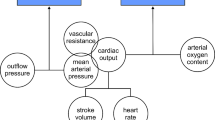Abstract
The authors present their experience with the use of continuous monitoring of cerebral tissue pressure (CTP) in a neurosurgical intensive care unit. The CTP was monitored in 100 patients with a variety of neurosurgical diseases. In 13 patients simultaneous recording of the ventricular fluid pressure (VFP) was carried out for up to 134 h. In 21 patients intrahemispheric gradients of CTP were recorded and in 66 patients CTP alone was recorded (59 supratentorial, 7 infratentorial). In general CTP monitoring gave excellent results with no additional risk to the patient and low costs for the monitoring system. The behaviour of CTP in various clinical conditions and the indications and limitations of CTP monitoring compared with VFP or epidural pressure monitoring are outlined. The authors recommend monitoring of VFP as the method of choice in ICP supervision. Continuous monitoring of CTP is the preferred method in the posterior fossa, after large craniectomies, for postoperative supervision following open surgery and in cases of narrowed ventricles.
Similar content being viewed by others
References
Adson AW, Lillie WL (1927) The relationship of intracerebral pressure, choked disc, and intraocular tension. Trans Am Acad Ophthalmol Otolaryngol 30:138
Guillaume J, Janny P (1951) Manometrie intra-cranienne continue: interêt physio-pathologique et clinique de la méthode. Presse Méd (Paris) 59:953
Lundberg N (1960) Continuous recording and control of ventricular fluid pressure in neurosurgical practice. Acta Psychiatry Scand 36 [Suppl 149] idem Munksgaard, Copenhagen
Bruce DA, Goldberg A, Schut L (1977) ICP monitoring in critical care pediatrics. Intensive Med 3:184
GrawMc CP (1976) Continuous intracranial pressure monitoring: review of techniques and presentation of a method. Surg Neurol 6:149
Vries JK, Becker DP, Young HF (1973) A subarachnoid screw for monitoring intracranial pressure. Technical note. J Neurosurg 39:416
Wilkinson HA (1974) The intracranial pressure monitoring cup catheter: technical note. Neurosurgery 1:139
Dorsch NCW, Simon L (1975) A practical technique for monitoring intracranial pressure. Neurosurgery 42:249
Gaab M (1980) Die Registrierung des intrakraniellen Druckes. Grundlagen, Techniken, Ergebnisse und Möglichkeiten. Habilitationschrift, Julius-Maximilians-Universität Würzburg
Gaab M, Gruss P (1978) Miniaturized methods for monitoring intracranial pressure in craniocerebral trauma before and after operation. Adv Neurosurg 5:5–11
Gaab M, Knoblich OE, Dietrich K (1979) Miniaturisierte Methoden zur Überwachung des intrakraniellen Druckes-Techniken und klinische Ergebnisse. Langenbecks Arch Chir 350:13
Gaab M, Sörensen N (1980) Extradurale Langzeit-Messung des intrakraniellen Druckes in der Pädiatrie. Kinderarzt 11:11
Gobiet W, Bock WJ, Liesegang J, Grote W (1974) Experience with an intracranial pressure transducer readjustable in vivo. Technical note. J Neurosurg 39:272
Kosteljanez M, Borgesen S, Stjernholm P et al (1986) Clinical evaluation of a simple epidural pressure sensor. Acta Neurochir 83:108
Nagai H, Kamiya I, Ikeyama J et al (1980) A newly devised transducer for epidural pressure management and its clinical use. In: Shulman K, Marmarou A, Miller JD, Becker, Hochwald GM, Brock M (eds) Intracranial pressure IV. Springer, Berlin Heidelberg New York
Langfitt ThW (1973) Summary of First International Symposium on Intracranial Pressure, Hannover, Germany, July 27–29, 1972. J Neurosurg 38:541
Nornes H, Serck-Hanssen F (1970) miniature transducer for intracranial pressure monitoring in man. Acta Neurol Scand 46:203
Piek J (1988) Monitoring of intracranial pressure (letter). J Neurosurg 68:657
Dekaban AS (1958) Is needle punction of the brain entirely harmless? Neurology 8:556
Fleischer AS, Patton JM, Tindall GT (1975) Continuous monitoring of intracranial pressure in severe closed head injury without mass lesions. Surg Neurol :31
Piek J, Kosub B, Küch F, Bock WJ (1987) A practical technique for continuous monitoring of cerebral tissue pressure in neurosurgical patients. Acta Neurochir 87:144
Piek J, Plewe P, Bock WJ (1988) Intrahemispheric gradients of brain tissue pressure in patients with brain tumors. Acta Neurochir 93:129
Brock M (1972) Measurement of brain-tissue pressure (letter). Lancet II:995
Author information
Authors and Affiliations
Rights and permissions
About this article
Cite this article
Piek, J., Bock, W.J. Continuous monitoring of cerebral tissue pressure in neurosurgical practice—experiences with 100 patients. Intensive Care Med 16, 184–188 (1990). https://doi.org/10.1007/BF01724800
Received:
Accepted:
Issue Date:
DOI: https://doi.org/10.1007/BF01724800




